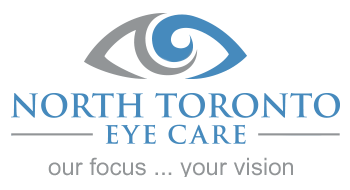Presbyopia
It’s inevitable that our eyes will require some maintenance as we begin to age. After approximately 40 years old, you will start to experience the loss of some of your near-vision focusing ability, called presbyopia. This is completely normal and inevitable, even if you’d never had vision problems in the past.
What is Presbyopia?
Presbyopia is caused by the natural thickening and gradual loss of flexibility of the eye’s natural lens. The more flexible the lens, the more easily it changes shape- this lets you focus at both near and far distances.
This common, age-related condition will likely have you holding your phone or newspaper farther away to read the text, and can lead to headaches and eye strain, making these tasks uncomfortable and exhausting.

Causes of Presbyopia
Age is by far the greatest risk factor, with nearly everyone experiencing some degree of this condition after the age of 40. It is also possible to have presbyopia and another type of refractive error, such as astigmatism, hyperopia (farsightedness), or myopia (nearsightedness).
Symptoms of Presbyopia
Though the condition is generally quite easy to diagnose, there are a few symptoms you can look for:
- Blurred vision at reading distance
- Eye strain or squinting
- Headaches related to straining
- Holding objects farther away for easier near-vision reading
- Needing brighter light to read or do work close-up
Treatment for Presbyopia
If you only need to correct symptoms of presbyopia without additional correction of other vision issues, glasses or contacts may be the only necessary treatment. Glasses with bifocal lenses or progressive lenses can both be great options, though some people have a hard time starting to wear glasses regularly later in life, which is why they may opt for contacts or surgery. Both glasses and contacts are temporary treatments that will require maintenance over time.
The most effective long-term treatment is a Refractive Lens Exchange, or Clear Lens Exchange. This refractive surgery removes the lens and replaces it with an intraocular lens (IOL). This is very similar to a standard cataract surgery, but without the lens cloudiness associated with cataracts. There are various IOLs you can choose from to restore your vision.
If you are experiencing any of the above symptoms, contact us at North Toronto Eye Care today to schedule a consultation.



